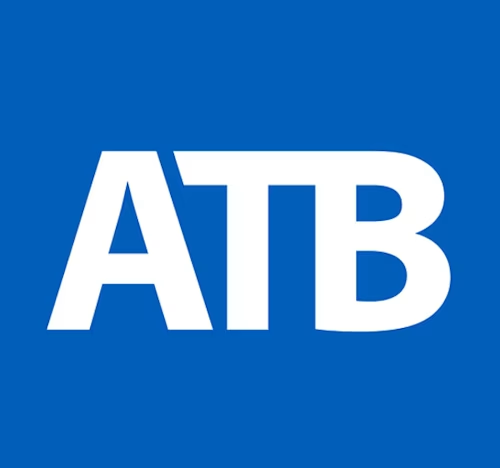
ATB Financial Builds Relationships Through Automation with eSignature
Alberta's ATB bank uses Docusign eSignature to process loans in under an hour. They also remotely service the COVID Relief Program in over 160 communities.


ATB Financial got started in 1938 to help Albertans through tough economic times and have since expanded to become a full-service operation that is a catalyst for economic growth in the province. Everything ATB does is focused on how it can serve Albertans—from providing expert advice and supporting entrepreneurs, to helping Albertans buy a home and grow their wealth.
ATB recognized that modern banking isn’t about the physical branch, so they committed to meeting clients where and when they needed, whether in Alberta’s large cities or the smallest communities in over 160 locations.
We met with Deb Keller, a 14-year veteran of this Crown corporation, now its Senior Product Manager of Data Governance and AI. Here’s what she had to say about how Docusign helps them help their clients.
Where did digitization begin?
DK: Our first move to digital platforms began with ATB’s Investor Services division adopting electronic signatures to automate signature collection and reduce paperwork. Docusign eSignature was rolled out internally at first—eliminating the requirement for physical signatures on contracts, invoice approvals, and approvals for lines of credit.
With internal success under our belt, ATB expanded eSignature use to customer-facing transactions in 2018. Slowly and surely, more document workflows are being automated to take advantage of Docusign. At ATB, we’ve set a lofty goal: All forms that can be electronically signed will be.
“As we obsessively look for ways to enhance the client experience, we’ve migrated more and more document workflows to take advantage of Docusign.”
Deb Keller, Senior Product Manager, Data Governance and AI, ATB
Why is integration with your Content Management system important?
DK: Around the same time electronic signatures were being introduced at ATB, the bank was also exploring electronic content management systems. Integration with Docusign was a key consideration in vendor selection. We sought a system where front-of-the-house client actions could automatically trigger back-office support. I can explain the simplicity of our integrated workflow like this:
We send a loan agreement to a client in a Docusign envelope.
The client signs electronically from wherever they are.
The signed document is routed back to the sales team member and is automatically saved in the client’s folder in our content management system.
What was once a 4-hour manual process can now be done to the delight of our clients in just minutes. Integration with Docusign completely eliminates the need for downloading documents, printing, signing, and FAXing or emailing attachments back to the customer. The result: our clients no longer need to come into a branch to sign documents – instead they can sign digitally, which frees them up to get on with their business of the day.
How are your clients adapting?
DK: A couple of years after ATB introduced eSignature, we conducted an internal survey that revealed team member satisfaction rates of over 80%. Clients who had used Docusign in the previous 30 days were also surveyed in terms of security, time, and ease of use. Adoption rates were even higher at 90+%.
Clients raved about completing agreements in minutes, rather than having to drive to a branch to physically sign documents. And, if an edit was required on an agreement, simply noting that change using the ‘Comment’ feature prompts bank personnel to make the change and resend the corrected agreement.
Our internal research and AI team recently calculated the time saved by implementing electronic signature technology in their loan processes. The results have been tremendous.
Simple Loans
Used to take 4 hours to process. With Docusign, simple loans are processed in 20 minutes.
Complex Loans (requiring multiple signatures)
Used to take 6-8 hours to process. With Docusign, complex loans are processed in 1 hour.
During COVID, how was ATB able to help Albertans?
DK: When the pandemic hit, ATB stepped up to help administer the province’s COVID Client Relief Program. ATB is already well-entrenched in communities across Alberta, having earned citizens’ trust over many years of building relationships and providing support through fire and flood.
Because we were already supporting remote transactions, the bank adapted quickly when COVID restrictions called for branches to close – and our client base adapted, too. Electronic signature use has risen 41% across all banking functions since lockdowns began. Digitizing workflows for the COVID Client Relief Program was a task that we were well equipped to do – and it has been gratifying to capitalize on our existing channels to reach all Albertans who qualify for financial assistance.
Said one relief client, “It took me longer to do an online restaurant order than to apply for COVID relief through ATB!” That makes the 5,000+ bank team members very proud as Albertans helping Albertans save their businesses and their homes.
What’s next for ATB?
DK: We have plans to digitize more of our offerings, with continued use of electronic signature and cloud-based tools to make that happen. We’re optimistic that regulations will be expanded to accommodate e-signature for the few uses that still require paper and ink signatures like property registration and ownership agreements. The goal is to make banking self-serve for those who wish to do so.
We recognize that our competitors are aggressively moving to digitize and automate processes, but also understand that one size does not fit all. As a leading financial institution, we pride ourselves on personal touch and work hard to free our staff from administrative tasks to allow everyone more time to connect with customers.
“No one gets into banking to push paper. We’re here to know our clients and help them,” says Ms. Keller.
Read the full ATB Customer Story

Related posts
 API SuccessUpdated Feb 11, 2025
API SuccessUpdated Feb 11, 2025 API SuccessUpdated Feb 11, 2025
API SuccessUpdated Feb 11, 2025HR’s Most Common Questions About Digitizing Paperwork

Easily capture consent with MyClickwrap, our newest sample app

HR’s Most Common Questions About Digitizing Paperwork
Discover what's new with Docusign IAM or start with eSignature for free
